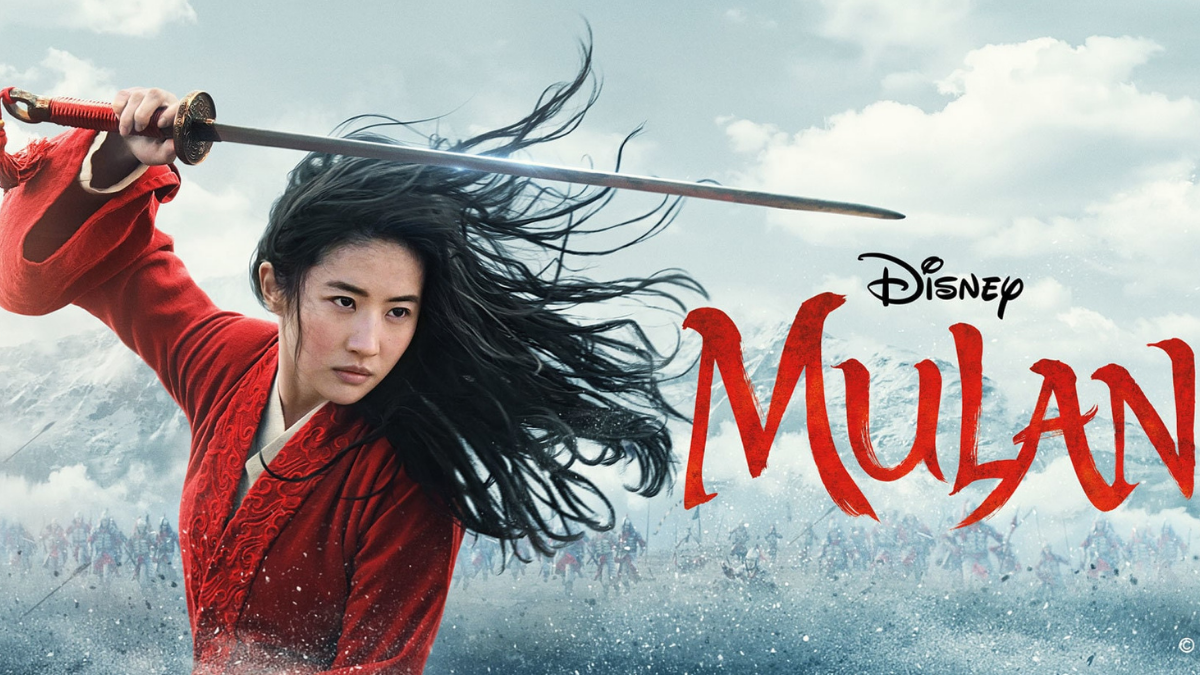Mulan (2020) Review: Disney Fails To Capture The Traits Of Mulan

This article was originally published in the Women’s Republic.
“I will bring honour to us all.”
The new Mulan’s predecessor is one of the most beloved animated movies during the Disney Renaissance era. The musical numbers and the fun and charming characters are just two of the many reasons why Mulan (1998) is a fan favorite. While Disney’s new live-action remake, directed by Niki Caro, follows the same basic plot, there are a few changes made to the plot and the character arcs. Namely, the titular character herself.
Disney’s Mulan (2020) follows the story of a young Chinese woman who disguises herself as a man to join the war and become a warrior. She is outspoken and wants to challenge the traditional roles set for women from an early age. In this remake, the writers introduce a concept for a lifeforce, Chi, that makes Mulan special and extraordinary compared to the other girls in her village. Her father advises her that it is best to hide her powers so that it would be easier for the matchmaker to find a suitable husband and bear children.
Taking big risks
The new live-action remake takes a big risk in eliminating some of the incredible elements of the original animated feature. The remake does not have any of the memorable musical numbers but instead uses instrumental scores to bring nostalgic feelings. Instead of the beloved Mushu, we are introduced to a Phoenix that shows Mulan the way throughout the entire film. That character seems very unnecessary and serves no purpose to the plot. Instead of Shan Yu, the main villain in Mulan (1998), the live-action remake has two villains, Bori Khan and Xianniang.
A massive difference in the animated feature and the live-action remake is the character arc of Mulan. This is not the first time that Disney has made a few changes to the plot and character in the previous Disney live-action remakes. But what makes this a massive mistake is that Mulan is written as a character that displays her strength through her braveness, cleverness, and determination.
This version of Mulan tends to stray away from the core values of the predecessor. Introducing the concept of a lifeforce does not enable her to learn with the other characters. Her main conflict is not her hidden identity, but not using her powers. She is a natural fighter, a woman with God-given gifts. These gifts make her more capable than the other men in her training camp.
Mulan’s rejection of hyper-masculinity

In the animated feature, Mulan’s journey is what makes her character unique. Her inability to accept femininity nor masculinity is an aspect that is explored in her arc. Mulan’s quick-thinking and bravery show that she stands out from the rest of the group. She does not need to engage in hyper-masculinity to solve her problems. She finds solutions to them by using her cleverness, not violence. This is where her core value and strength lies.
In the training camp, Mulan does not engage with hyper-masculinity. She does not engage with masculinity and femininity. She knows that through using her strength, which is her determination and cleverness, she can achieve her goals. And she does. Mulan learns that there is a higher value outside of the hyper-masculine way of thinking.
Mulan’s core values are what drives her character arc. While learning to accept her true strength, empower femininity, and reject hyper-masculinity, she teaches her friends to engage in her good characteristics as well. Unlike her live-action version, Mulan does not use a lifeforce to harness power and strength. Those values are traditionally considered by men but Mulan accomplishes it regardless of her gender expression.
Embracing both femininity and masculinity

For the plot to move forward, the character must learn new lessons from the supporting characters. Without that element, the character’s journey has no purpose. In the animated feature, Mulan meets three friends who engage in hyper-masculinity. They are not problem-solvers like Mulan but use their brute strength to try and achieve their goals.
When Mulan and her friends reach the Imperial City to save the Emperor, her male friends, who at the beginning of the film engaged in hyper-masculinity, later demonstrate femininity. By dressing up as concubines to save the Emperor, they learn that there is value in femininity. The characters are learning from each other. The statement here is that by embracing both femininity and masculinity, it works in their favor. The characters learn that there are no limitations to gender expression.
How the live-action rejects the core values
The Disney remake does not follow any of the core values that are set in the animated feature. One of them is Mulan’s internal conflict of whether or not embracing her lifeforce would bring dishonour to her family. Her true identity is not challenged. In this movie, her power makes her as capable as, and perhaps even stronger than, the others in the training camp. What makes her strong is her lifeforce and not her gender expression.
This is where the movie gets it wrong. Mulan does not learn to reject hyper-masculinity or learn from her friends. Her lifeforce is what stands in the way of the character’s growth. Introducing the character as someone who is naturally gifted and knows everything, makes Mulan bland and uninteresting.
Introducing a lifeforce as her new identity holds Mulan back
In the animated feature, Mulan is not naturally gifted with a lifeforce. Mulan is clumsy, tomboy-ish and funny. Using her cleverness and determination as a character, she learns to improvise when she is in front of dangerous situations. She does not use hyper-masculine traits to win a fight.
The new Mulan has a very different personality and character traits. The live-action version of Mulan starts as a superhero. Her journey is not about empowering femininity or rejecting hyper-masculinity, because her internal conflict is about her lifeforce. Her struggle to accept her new identity overpowers everything else about Mulan’s core values. It holds her back from reaching out to her other characters.
Conclusion

Disney’s remake of Mulan misses on a lot of the traits from the animated feature. Introducing a lifeforce completely avoids character growth and does not discuss the value of gender expression. When her real identity is revealed, she is expelled from the army and returns home. Again, the problem here is that Mulan was more focused on her powers and not her true identity.
It fails to recapture Mulan’s essential character traits and instead diverges away from them entirely. There is no emotional growth between Mulan and her father or between any of the characters in the film. It tries to follow a more conventional story of Mulan while rejecting the core values from the animated feature.
It is safe to say that Disney made a huge risk by making this movie. The critical differences in the movie change a lot of Mulan’s character traits, and it is evident that the writers missed the opportunity to make her special.
